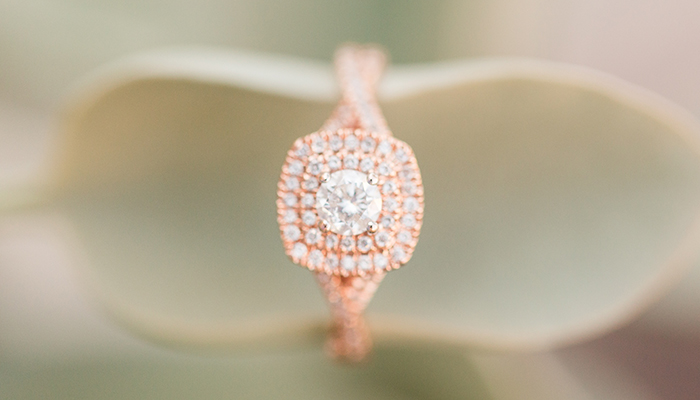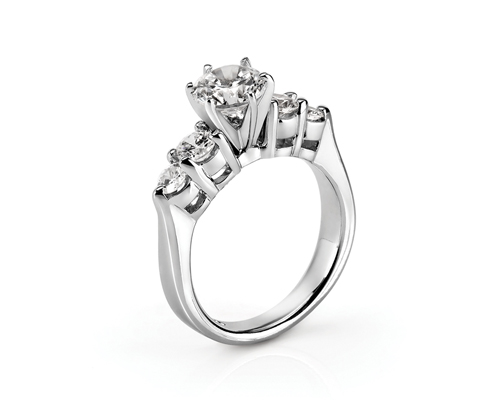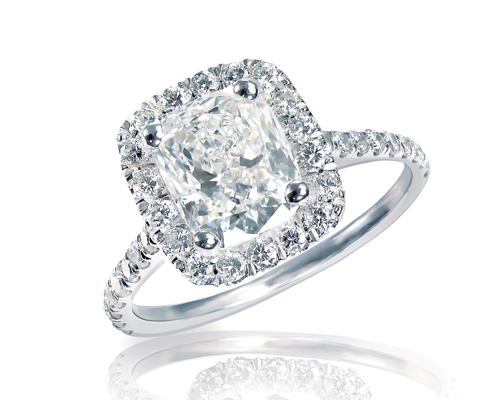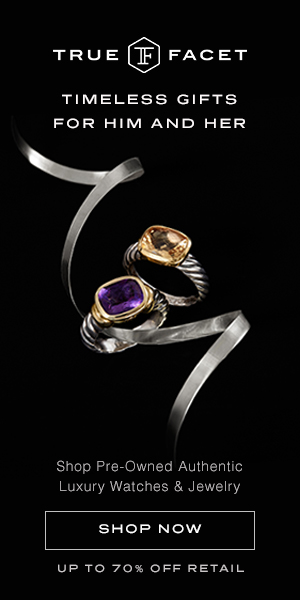Which Metal Should My Engagement Ring Be Made Of?
Choosing the metal for your engagement ring is a big deal; after all, you will be wearing the ring for the rest of your life, so it needs to be able to withstand all that wear and tear. There are some important considerations to keep in mind before you make the final decision, including the price, appearance, and how the metal will look with the gemstone. Generally, it’s best to avoid metals like silver, which tarnishes over time and scratches easily. Here are five metals that are great choices for your engagement ring:
Yellow Gold: The Classic Choice

Yellow gold was once the most popular engagement ring metal, though in the past few decades white gold has gained prominence as the most sought after material. Still, yellow gold can be a great choice. If your ring is more of a traditional, dainty solitaire than a complex modern ring, yellow gold can work well. Yellow gold is also a great match for a colorless diamond and helps emphasize the brilliant sparkle of the stone.
Rose Gold: Perfect for a Vintage Look

First popularized in 19th century Russia, rose gold jewelry was very common in the Victorian era and holds a vintage appeal. That being said, rose gold has made a comeback in recent years and more and more people are choosing the unique metal for their engagement ring. If you want your engagement ring to look extra romantic, rose gold is a great choice (especially paired with a deep red ruby!).
White Gold: A Chic and Modern Metal

The majority of engagement rings purchased today are made of white gold, and for good reason. This versatile and timeless metal just happens to look great with diamonds and most other gemstones. If you’re going for a blue sapphire engagement ring or another cool colored stone, it’s almost always better to go for a light colored metal.
Platinum: Durable and Luxurious

Platinum is sought after for its durability, beauty, and rarity. If you want to make sure your engagement ring says luxury and elegance, go with platinum. It’s hypoallergenic as well, so it’s the perfect metal for people who might have allergies to certain materials. For all these benefits, expect to pay more for your platinum ring than you would for one in white gold.
Palladium: Platinum’s Lighter Cousin

Palladium is similar to platinum in most ways, but because it’s less dense, it feels a lot lighter. This less common metal is usually blended with gold to form white gold, but it’s a great choice on its own as well. Like platinum, it usually makes for a more expensive engagement ring.
White gold, platinum and palladium are ideal if you want that sleek and modern look. If you’re looking for a trendy ring that has a vintage vibe at the same time, rose gold is your go-to choice. Finally, yellow gold is great if you want a more traditional engagement ring.
In terms of gold, 18k vs 14k is another question to consider. As gold is too soft at 24k, pure gold is mixed with alloys to make the final composition. 18k is more expensive and has a richer yellow composition, but it’s also softer. 14k, on other hand, is more affordable and more durable.
It’s always best to consider your gem(s) and accompanying wedding band when making the choice for your engagement ring metal. While yellow gold looks best mainly with diamonds, rose gold tends to complement warm colored gems as well, and white gold and platinum are widely versatile in terms of gem choice. Take your time to explore all your options and find the best metal for your dream engagement ring.
To read more about fine jewelry and custom engagement rings from CadCamNYC, visit their site CadCamNYC.com.








